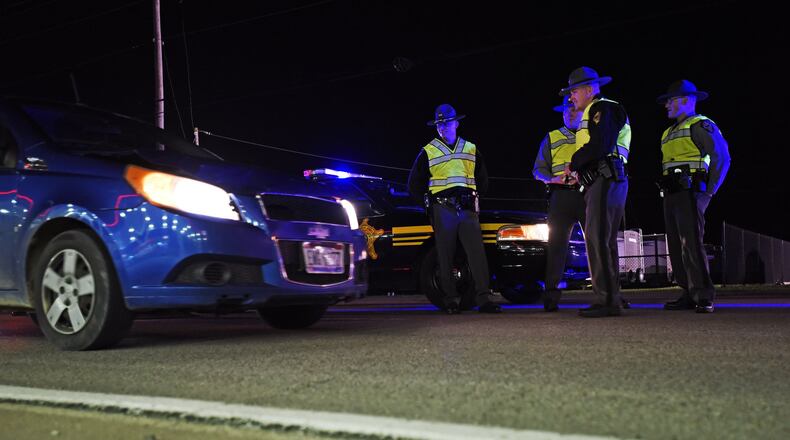"They are for a deterrent effect and to raise awareness," Pearcy said of the checkpoints, the most recent of which will be conducted Friday night in Hamilton.
That checkpoint is one of 18 scheduled in Butler County this fiscal year, which runs from October to September 2017, according to Pete Reising, a retired Oxford police officer who now works with the county’s OVI Task Force.
Butler County’s task force, which comprises 13 police agencies, was awarded a $225,000 federal grant from the Ohio Department of Public Safety to fund its checkpoints this fiscal year.
“These funds are critical to ensuring that we are doing everything possible to keep our streets safe,” Reising said.
From October 2015 to September 2016, the Butler County OVI Task Force conducted 18 OVI checkpoints that resulted in 15 OVI arrests, according to Reising.
Media postings of checkpoint locations often bring strong reactions from residents.
When Friday’s OVI checkpoint in Hamilton was announced, Chris Owens wrote, “Revenue enhancement,” on the Journal-News Facebook page.
Others thought it was a bad idea to make people aware of where police would be looking for impaired drivers.
“It’s absolutely ridiculous that these are publicized. Drunk drivers, you may want to take another route,” Nancy Hopkins Keller wrote on the Journal-News Facebook page.
But the formula for establishing a check point, publicizing it and even how it is conducted is dictated by law.
In Ohio, check points were first used in 1989 and ruled legal by the U.S. Supreme Court in 1990, but with caveats.
The site of the checkpoint must have a history of alcohol-related crashes or impaired driving arrests, and the location cannot be kept secret. A week prior to a checkpoint, officials are required to notify residents of the county that a checkpoint will take place. The day of, the checkpoint’s exact location must be announced.
Courts require the checkpoints to be minimally intrusive so, if a driver knows the location of the checkpoint they have the option to avoid it altogether. But if they do not avoid it, they consent to the minimal intrusion created by the checkpoint, according to officials.
“In Butler County our mission is to save lives,” Reising said. “Not to harass anybody.”
Some commenting on the Journal-News Facebook page said they felt safer knowing checkpoints were being conducted.
“No problem. I don’t drink. And especially don’t drink and drive,” Kent Keller II wrote.
Middletown Sgt. Mark Hoffman said the patrol saturation around the checkpoints are typically more beneficial in getting impaired drivers of the street.
He noted an OVI arrest takes a minimum of two hours of a officer’s time on a regular shift. The checkpoints and addition patrols keep the focus on impaired driving without depleting services to the rest of the community.
“Impaired driving is such a dangerous thing to do,” Hoffman said. “The checkpoints are brief and as unobtrusive as possible.”
— — —
BY THE NUMBERS: IMPAIRED DRIVING
2015
OVI arrests: 1,396
OVI related injury accidents: 185
OVI related fatalities: 9
Through August 2016
OVI arrests: 952
OVI related injury crashes: 146
OVI related fatalities: 6
About the Author

